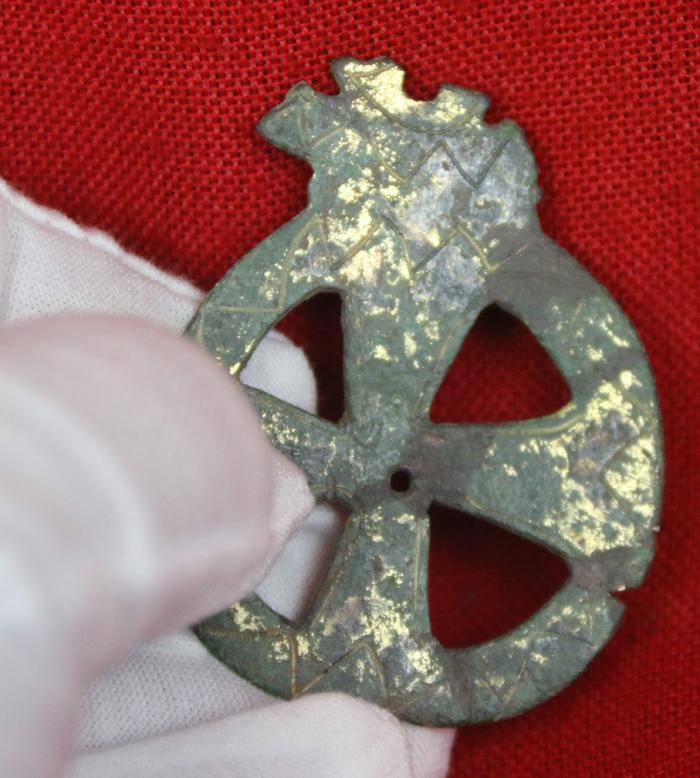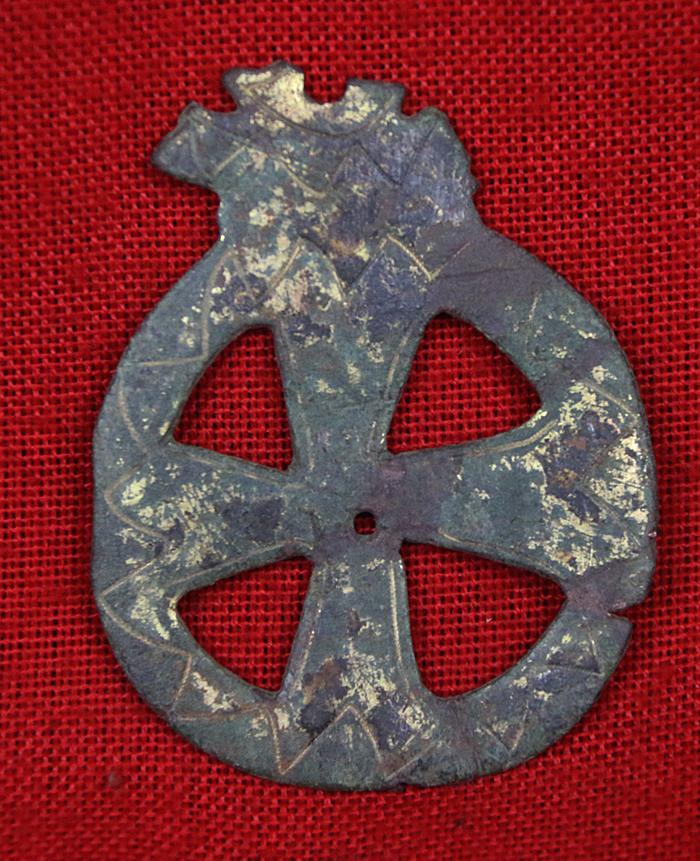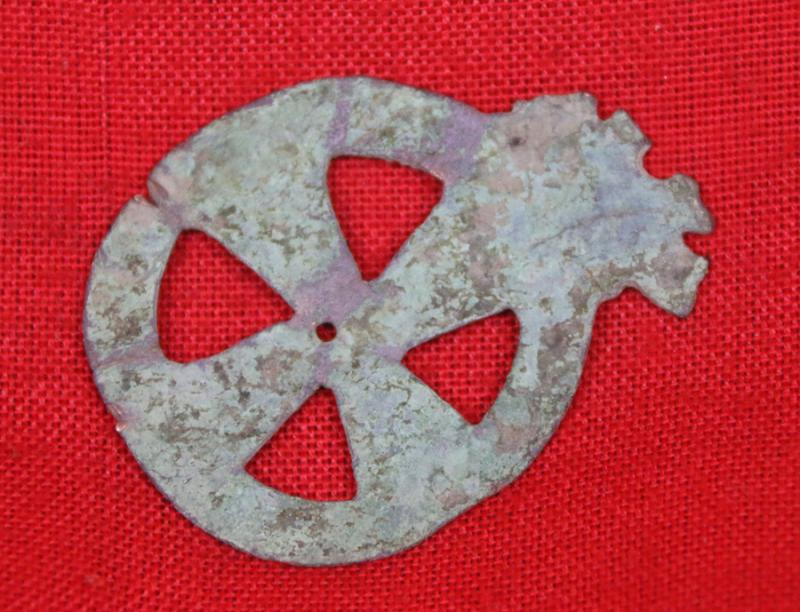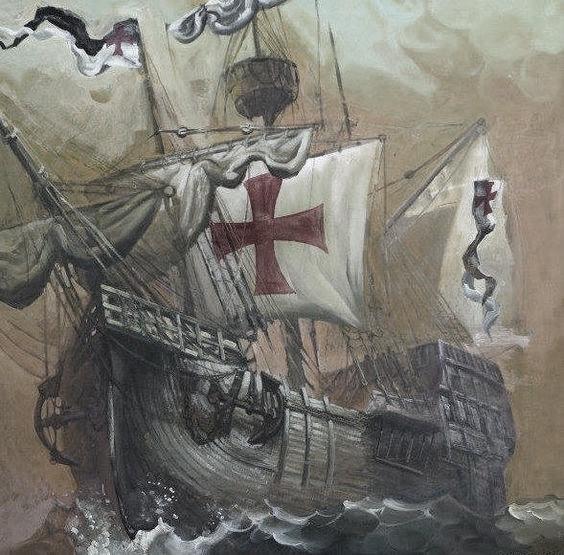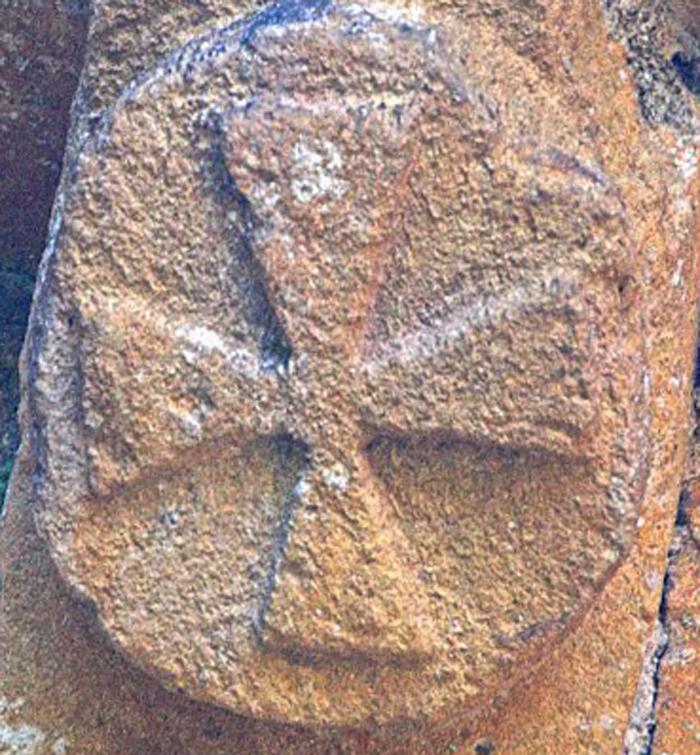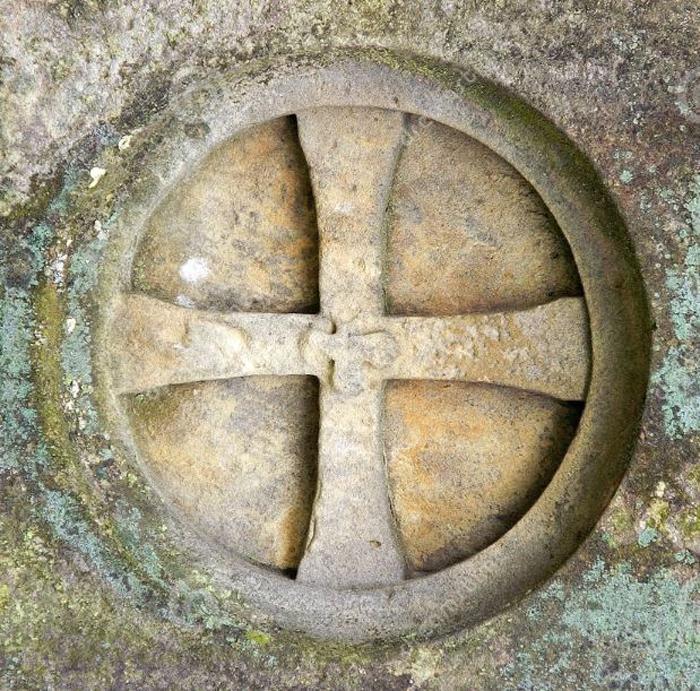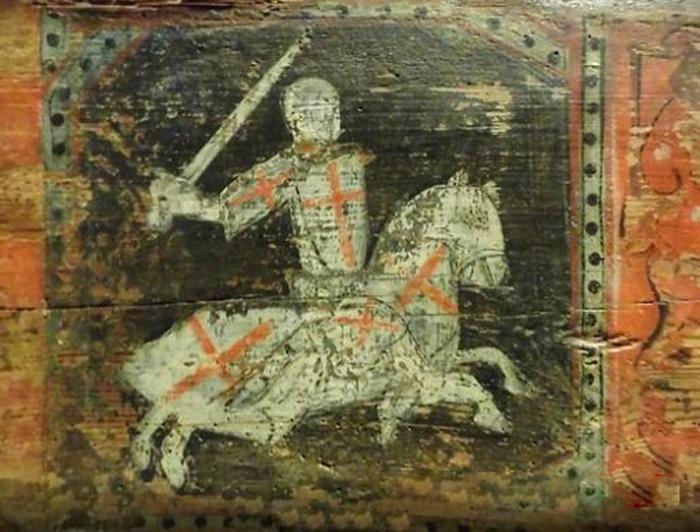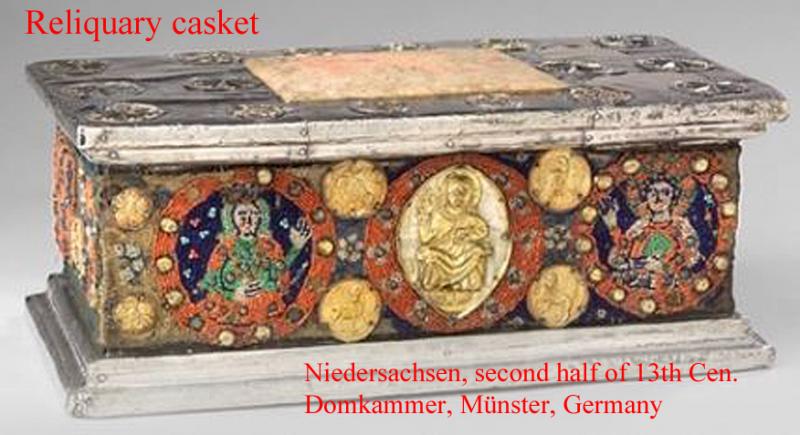A Fabulous Original Knights Templar Cross Antiquity, 12th Century, Hammered Gold Covered Bronze, Between 800 to 900 Years Old,
This is an original gold and bronze Knights Templar cross patee within a circle. The original surface of thin hammered gold is very worn to expose the bronze and the engraving, but gold can still be seen in areas. It was obviously once an important piece of Templar symbolism, and may well have been a central mount for the lid of a Templar treasure casket, or a Knights Templar Holy Reliquary casket [see a similar casket, photo 8, in the gallery, of a 13th century reliquary casket now in Germany. Note the applied golden disc plaques, the same size as this one].
This is still very impressive and an absolute iconic example of the Knights Templar cross symbol, the same symbol as worn, for example, upon their tabards, shields and ship's sails, and chisseled on tombs or templar buildings. Photos in the gallery of two carved Templar Crosses, one Templar Cross, perhaps, is an indication of the church's connection with the Knights Templar in the 12th century. Photo of St Mary's Church, Temple Guiting, Gloucestershire. another an stone carving, at Borthwick Church, Midlothian, Scotland. Burial place of a Knight, and Lord Borthwick and his lady.
The Poor Fellow-Soldiers of Christ and of the Temple of Solomon also known as the Knights Templar, or simply the Templars, was a Catholic military order founded in 1118, and were headquartered on the Temple Mount in Jerusalem through 1128 when they went to meet with Pope Honorius II. They were recognised in 1139 by the papal bull Omne datum optimum of Pope Innocent II. The order was active until 1312, when it was perpetually suppressed by Pope Clement V by the bull Vox in excelso.
The Templars became a favoured charity throughout Christendom, and grew rapidly in membership and power. Templar knights, in their distinctive white mantles with a red cross, were amongst the most skilled fighting units of the Crusades. They were prominent in Christian finance, non-combatant members of the order, who made up as much as 90% of their members,managed a large economic infrastructure throughout Christendom.They developed innovative financial techniques that were an early form of banking, building its own network of nearly 1,000 commanderies and fortifications across Europe and the Holy Land,
The Templars were closely tied to the Crusades; With its clear mission and ample resources, the order grew rapidly. Templars were often the advance shock troops in key battles of the Crusades, as the heavily armoured knights on their warhorses would set out to charge at the enemy, ahead of the main army bodies, in an attempt to break opposition lines. One of their most famous victories was in 1177 during the Battle of Montgisard, where some 500 Templar knights helped several thousand infantry to defeat Saladin's army of more than 26,000 soldiers, When the Holy Land was lost, support for the order faded. Rumours about the Templars' secret initiation ceremony created distrust, and King Philip IV of France, while being deeply in debt to the order, took advantage of this distrust to destroy them to erase his debt. On Friday the 13th of October 1307, he had many of the order's members in France arrested, tortured into giving false confessions, and burned them at the stake.
Pope Clement V disbanded the order in 1312 under pressure from King Philip. The abrupt reduction in power of a significant group in European society gave rise to speculation, legend, myth, and legacy through the ages.
Richard Lassels, an expatriate Roman Catholic priest, first used the phrase “Grand Tour” in his 1670 book Voyage to Italy, published posthumously in Paris in 1670. In its introduction, Lassels listed four areas in which travel furnished "an accomplished, consummate traveler" with opportunities to experience first hand the intellectual, the social, the ethical, and the political life of the Continent.
The English gentry of the 17th century believed that what a person knew came from the physical stimuli to which he or she has been exposed. Thus, being on-site and seeing famous works of art and history was an all important part of the Grand Tour. So most Grand Tourists spent the majority of their time visiting museums and historic sites.
Once young men began embarking on these journeys, additional guidebooks and tour guides began to appear to meet the needs of the 20-something male and female travelers and their tutors traveling a standard European itinerary. They carried letters of reference and introduction with them as they departed from southern England, enabling them to access money and invitations along the way.
With nearly unlimited funds, aristocratic connections and months or years to roam, these wealthy young tourists commissioned paintings, perfected their language skills and mingled with the upper crust of the Continent.
The wealthy believed the primary value of the Grand Tour lay in the exposure both to classical antiquity and the Renaissance, and to the aristocratic and fashionably polite society of the European continent. In addition, it provided the only opportunity to view specific works of art, and possibly the only chance to hear certain music. A Grand Tour could last from several months to several years. The youthful Grand Tourists usually traveled in the company of a Cicerone, a knowledgeable guide or tutor.
The ‘Grand Tour’ era of classical acquisitions from history existed up to around the 1850’s, and extended around the whole of Europe, Egypt, the Ottoman Empire, and the Holy Land.
Code: 23984
595.00 GBP

